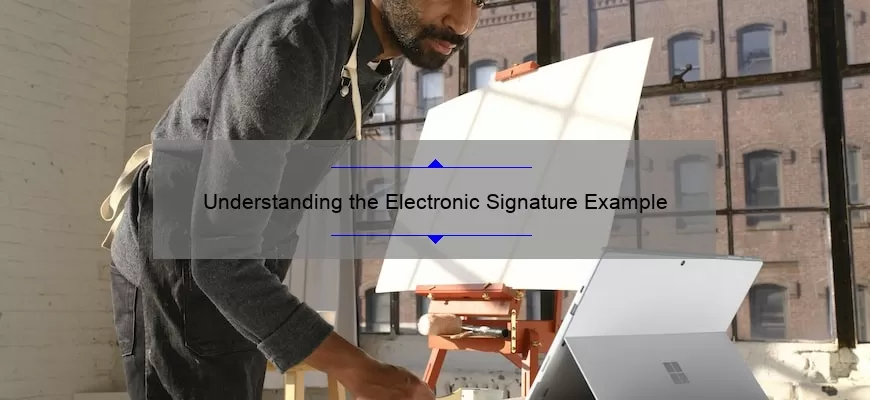What is an Electronic Signature?
An electronic signature, or e-signature, is an electronic record of an individual’s intention to sign a document. It is considered legally binding in most countries, and is used to authenticate and verify the identity of the signer. Electronic signatures are typically applied to digital documents such as contracts, forms, and agreements, but they can also be used on physical documents with the assistance of a digital scanner.
E-signatures are typically created and authenticated through software that is compliant with the Electronic Signatures in Global and National Commerce Act (ESIGN). Under this Act, digital signatures are given the same legal status as a handwritten signature, making it possible for individuals and businesses to enter into legally binding contracts and agreements without the need for a physical signature.
In addition to their legal standing, electronic signatures offer a number of
What are the Benefits of an Electronic Signature?
If you’re in the business world, you know how important it is to sign documents quickly and reliably. That’s why electronic signatures are so popular. An electronic signature, or e-signature, is an electronically-created signature that is used to sign documents, contracts, and forms.
Using an electronic signature can be a great way to save time, money, and hassle. Here are some of the top benefits of using an electronic signature:
1. Speed: Electronic signatures are incredibly fast and efficient. You can quickly sign documents with a few clicks, which saves you time compared to the traditional paper-based signature process.
2. Flexibility: Electronic signatures can be used to sign documents from anywhere in the world. This makes them perfect for remote or international business transactions.
3. Security: Electronic signatures are secure and reliable. They can be used to sign documents with a high level of security and privacy.
What is an Example of an Electronic Signature?
An electronic signature, also known as an e-signature, is a way of signing documents and other digital records electronically, as opposed to signing them on paper with a pen. Electronic signatures are commonly used to legally bind contracts and agreements, as they are legally binding in many countries.
An example of an electronic signature is a typed name at the end of a document, which is then “signed” using a third-party platform such as DocuSign or Adobe Sign. This type of signature is often used to sign contracts, documents, and other digital records. It is also used to authenticate digital transactions and to verify the identity of the person signing the document.
Another example of an electronic signature is a biometric signature, also known as a ‘digital signature’. This type of signature uses
How Can I Use Electronic Signatures?
Using electronic signatures is becoming increasingly popular for businesses, as it streamlines the process of signing documents and provides an efficient and secure way to digitally sign documents. Electronic signatures are legally valid and provide the same level of security as handwritten signatures, making them ideal for businesses that need to sign contracts and other documents quickly and securely. Here’s how you can use electronic signatures:
1. Prepare Your Document: Before you can begin the process of signing a document electronically, you must first prepare the document for signing. This means ensuring that all of the required fields are properly filled out, that any additional information needed to sign the document is provided, and that the document is in the correct format. This can be a time-consuming process, but once the document is ready it’s time to move on to the signing process






